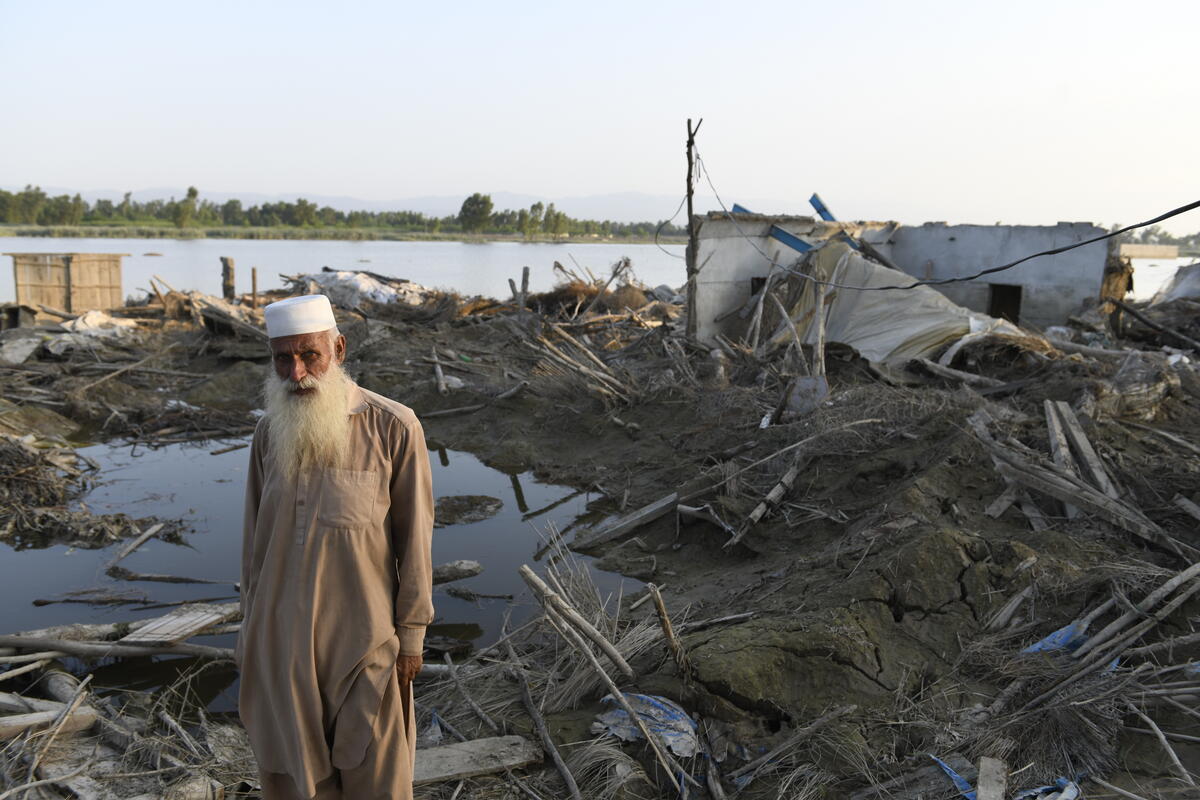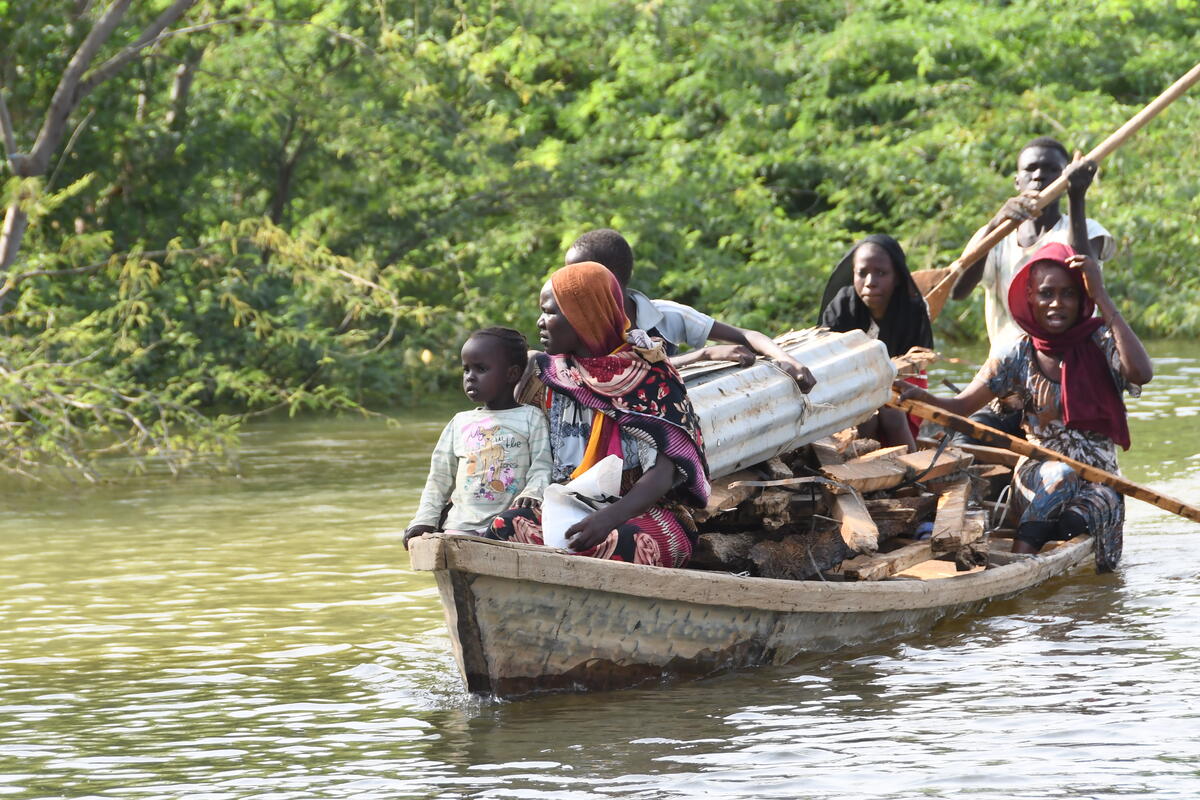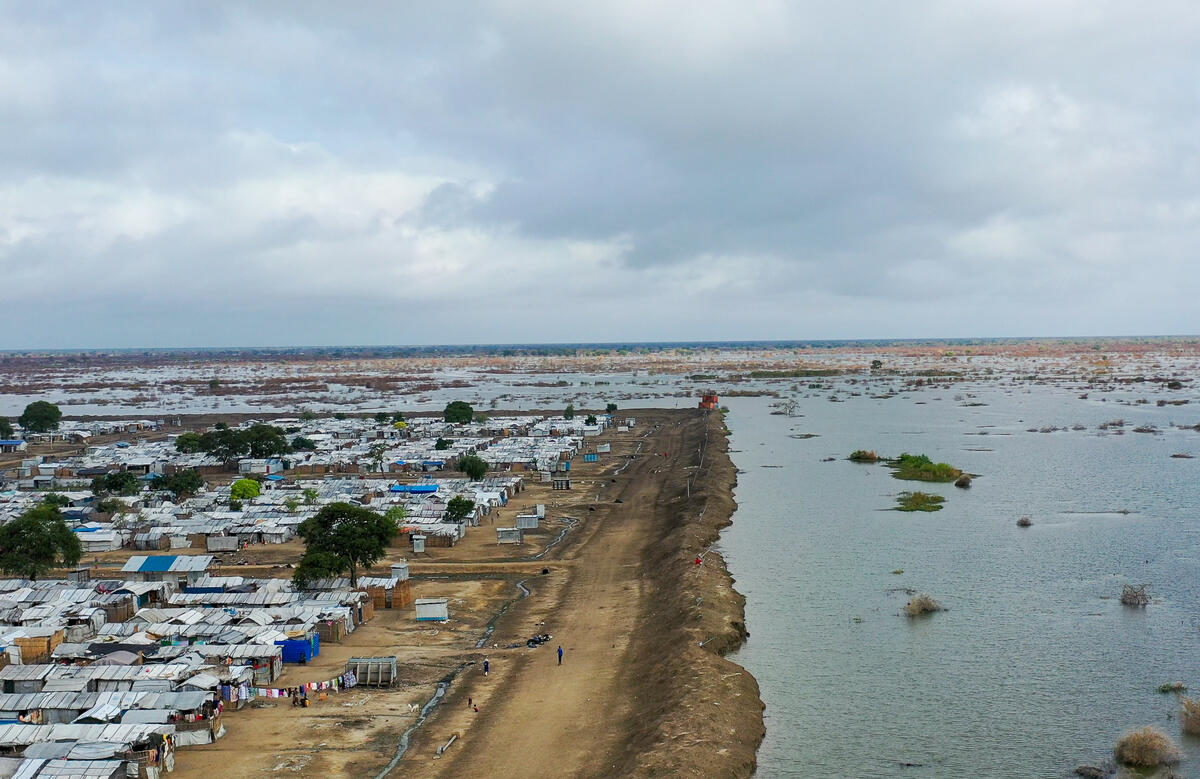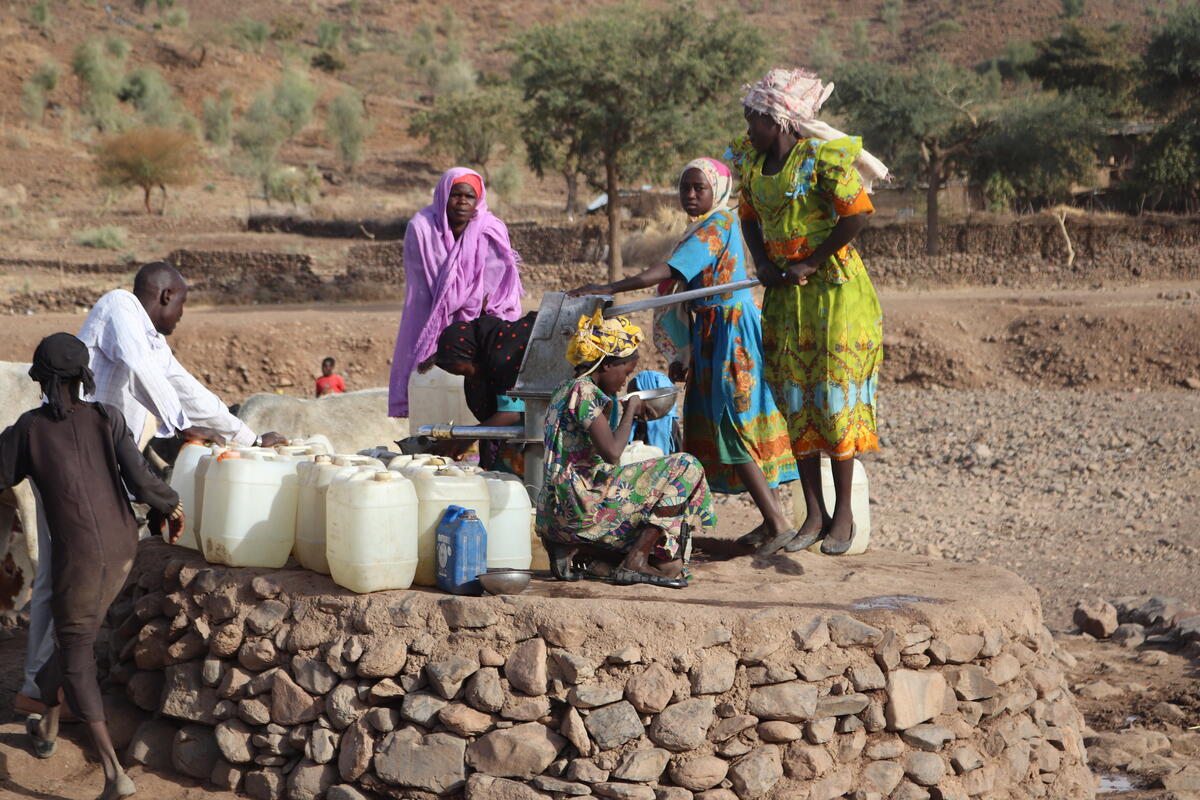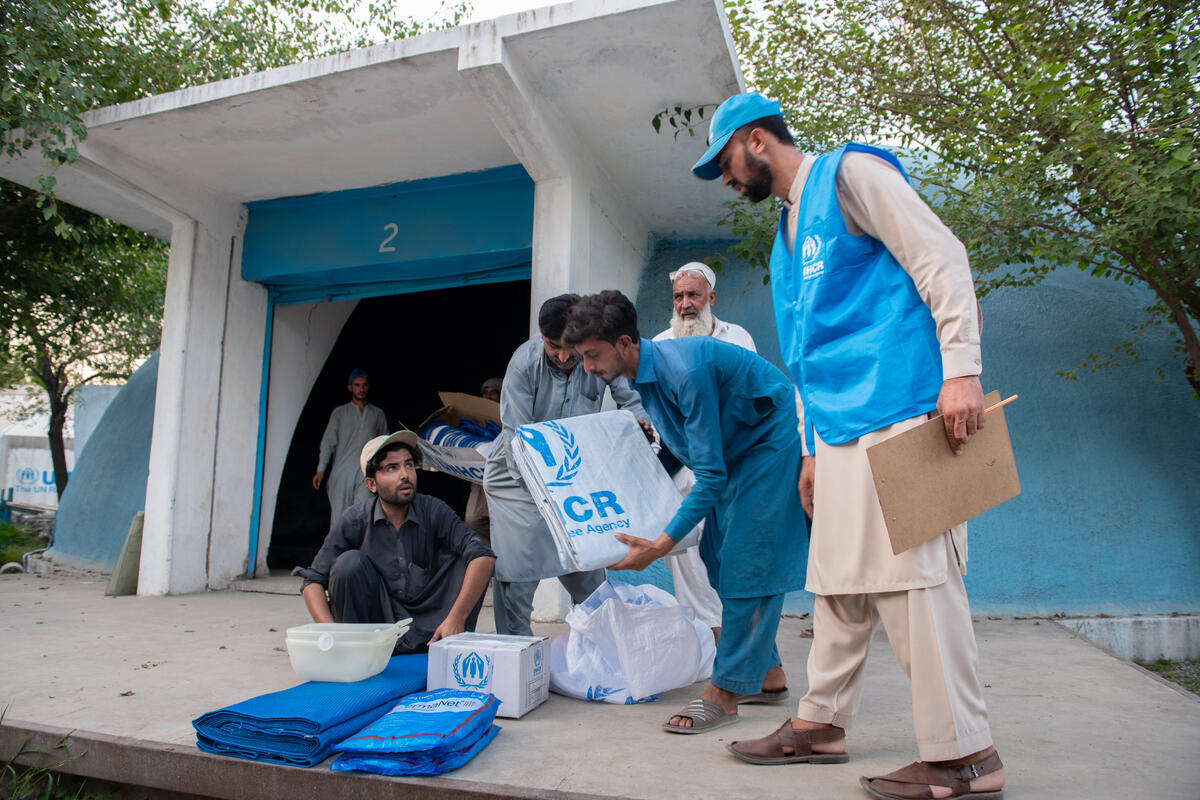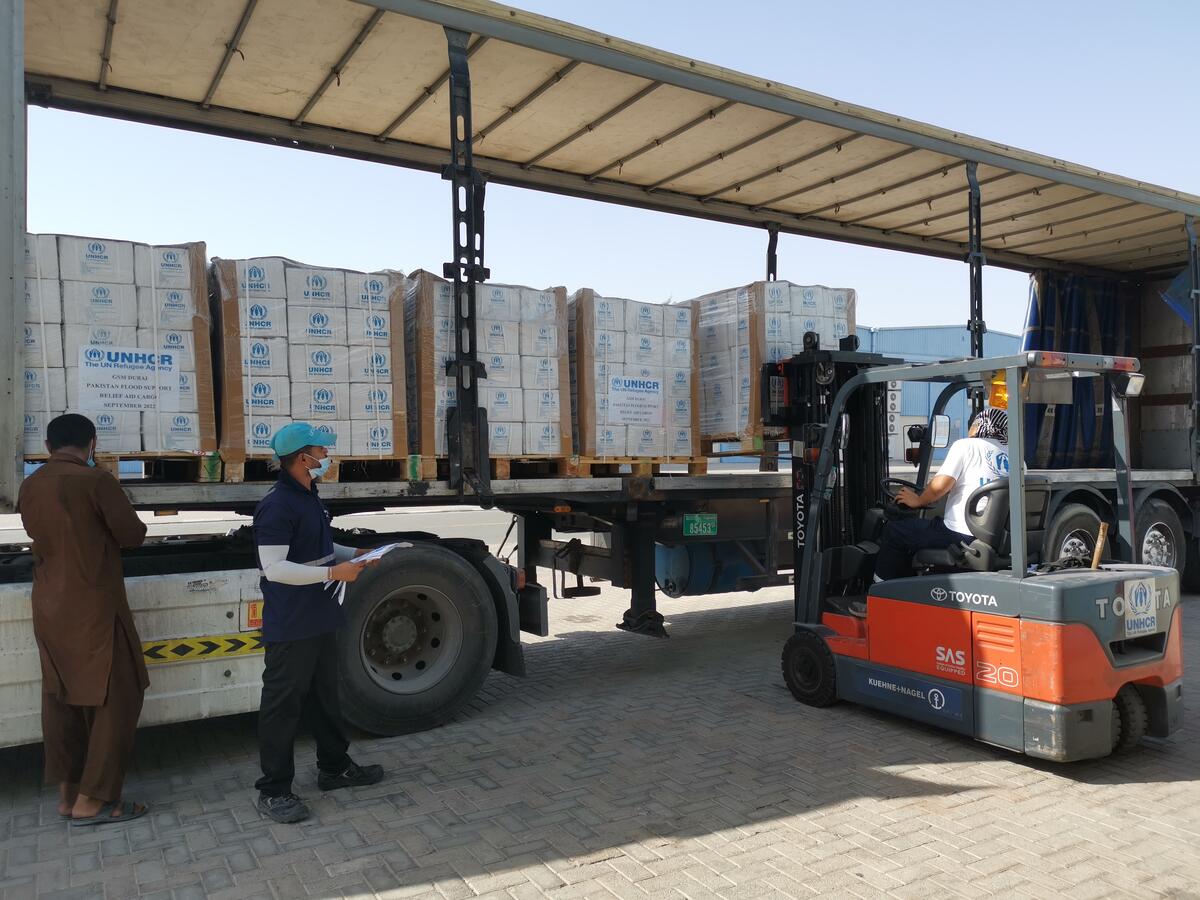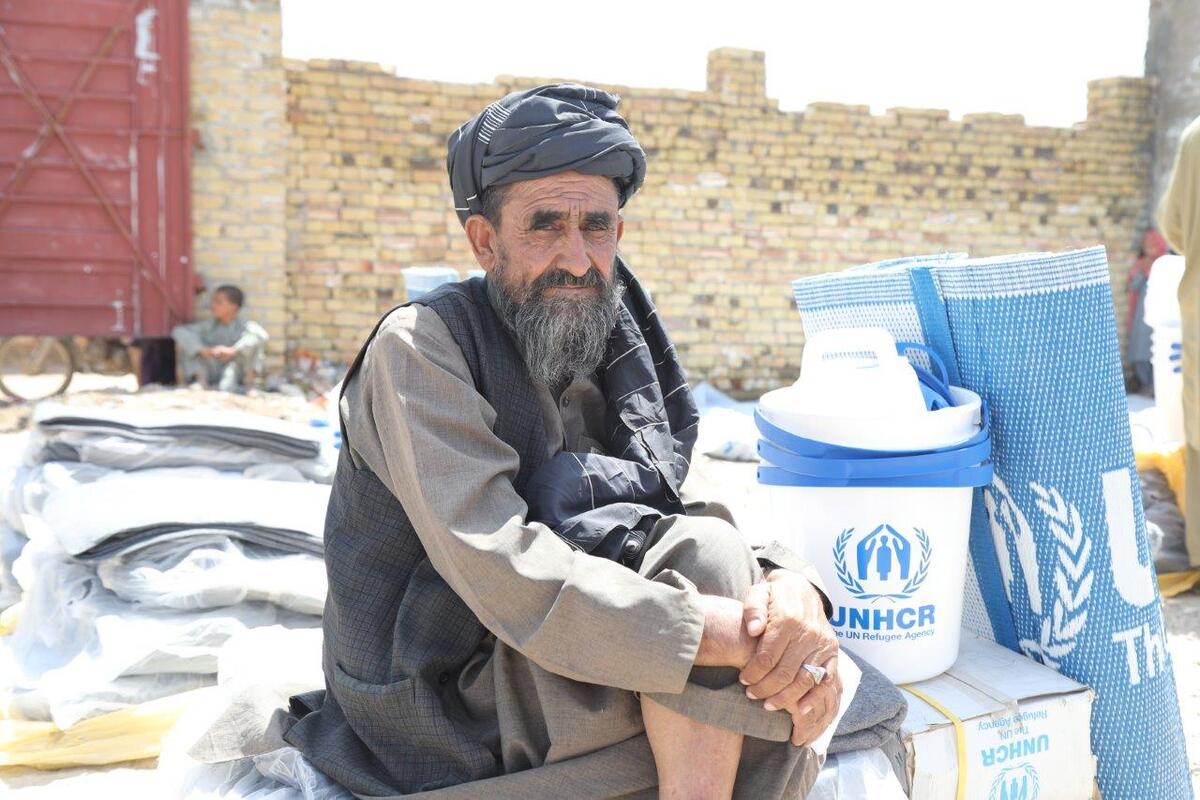Kenya flooding
Kenya flooding
Two refugees are dead and more than 78,000 people have been uprooted by flooding that engulfed refugee camps in eastern Kenya over recent days as rising waters destroyed hundreds of homes in the mainly Somali camps near Dadaab.
The sudden flooding has brought a major setback to our operations to settle thousands of Somali refugees who fled to Kenya in recent months to escape the conflict in their homeland. Among the fatalities reported yesterday (13 November) was a three-year-old child who was caught when waters swept across the low-lying region, completely engulfing thousands of refugee shelters and leaving hundreds of huts uninhabitable.
Hundreds of refugees in Ifo camp, the worst affected site, were able by late last night to move into nearby schools where they found shelter, while other refugees were able to escape to slightly higher ground in other parts of the sprawling camp.
UNHCR estimates that up to 90 percent of Ifo's 54,000 refugees have been affected by the flooding, while in Dagahaley, some 10 km away, up to 80 percent of the camp's 37,000 residents may have lost much of their belongings and many of their homes.
A UNHCR assessment team was yesterday unable to reach Dagahaley, 20 km from Dadaab, as roads leading out to the distant camp beyond low-lying Ifo were impassable. So far, Hagadera refugee camp which sits on higher ground, has not been affected by flood waters. More than 160,000 refugees are currently sheltered in the Dadaab region's three camps.
UNHCR staff in Dadaab report that this year's floods are comparable with the massive flooding which followed the record 1997 El Niño rains that swamped much of low-lying eastern Kenya. Latrines in the refugee camps have either collapsed or are full of flood water, posing a serious health risk, particularly to children who may be playing in the water. UNHCR information teams are this morning visiting the refugee camps to warn residents about the consequences of drinking flood water which may be contaminated.
Many of the most vulnerable refugees living in the camps, the old and the sick, may be stranded in their crumbling shelters, UNHCR staff fear. We are working with residents to help this group to move to safer and drier areas of the camps.
In Ifo camp's main hospital, some patients had to be moved from the worst-affected wards to other rooms. Food warehouses were also affected. UNHCR staff report that the monthly food distribution planned to begin tomorrow (14 November 2006) may not be possible as many distribution centres remain under water and refugees lack dry space to store their rations.
Aid agencies issued an appeal for $35 million last month to care for the influx of more than 34,000 refugees fleeing Somalia's fighting and chaos over recent months and prepare for the arrival of up to 80,000 refugees who may flee by the end of this year. UNHCR has so far available only $3.7 million against its $10.2 million share of the joint UN appeal, with all the funds so far only from internal UNHCR or UN Central Emergency Fund sources.
Recent arrivals from the fighting in Somali are sheltered at the transit site in Ifo camp, from where most floodwaters have receded. UNHCR is also organising an airlift of essential commodities for the camps. The normal overland supply route linking Dadaab and the provincial capital, Garissa, has been cut until floods brought about by the heavy rains that swept across the region recede.

